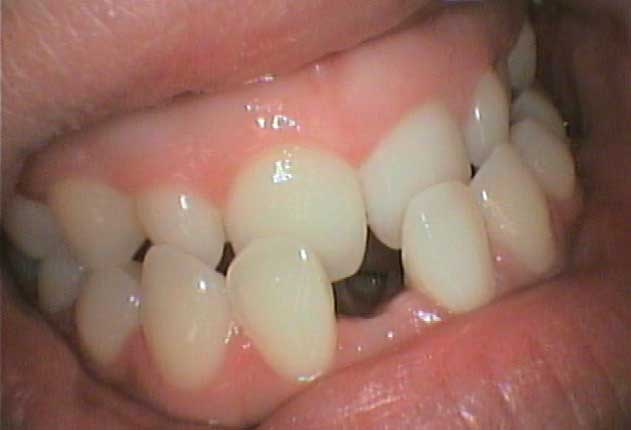How Often Do We Need to Review – Children Development and Bite – Part 4 – Lower Jaw Development – The Length
The lower jaw, the mandible, can continue to grow more forward than the upper jaw, maxilla. This growth usually stops when the child stops growing. Remember, this is biology, so there will always be a complication! In some males they can continue to grow till the age of 25 years old! Growth is not a continuous steady process; it has bursts of activity whenever it feels like it. There have been cases when orthodontic treatment has been completed only to find the jaw has kept on growing undoing some aspects of the treatment.
The classification of the type of bite is a Class III malocclusion.

This particular type of orthodontic situation may need surgical intervention to reduce the length of the jaw. Conventional treatment will not alter the growth of the jaw in the long term. The upper teeth sit behind the lower teeth and severe situations there may be no contact at all but an open bite in reverse to a typical open bite.
Therefore, how often do we review this situation? ….for some people, years.
Just when you thought it could not get any more complicated, there is a situation when a patient can have a pseudo Class III malocclusion. This occurs when the upper teeth have titled inwards behind the lower teeth when they starting growing in the mouth. This then has caused the lower jaw to jut out more forward. It is not a jaw growth issue but interference by the position of the upper front teeth. The jaws want to bite properly but when the front teeth meet, the mandible slides off the upper front teeth and moves forward.

Tilting the upper teeth more forward would allow the mandible to sit in a more normal position behind these teeth. The chin would also move backwards into a better alignment with the face as well.

Next time we will talk about Class II malocclusions, which consider the angle of growth of the mandible.
Need an Appointment?
If you’d like to book an appointment with the dentist at Seymour Dental then call us in Dulwich Hill, Sydney on (02) 9564 2397 or
contact us
Next week
Next Week- How Often Do We Need to Review – Children Development and Bite – Part 4 – Lower Jaw Development - The Angle